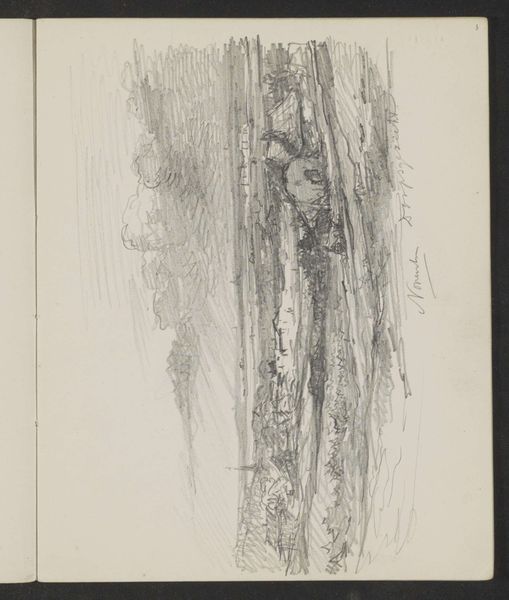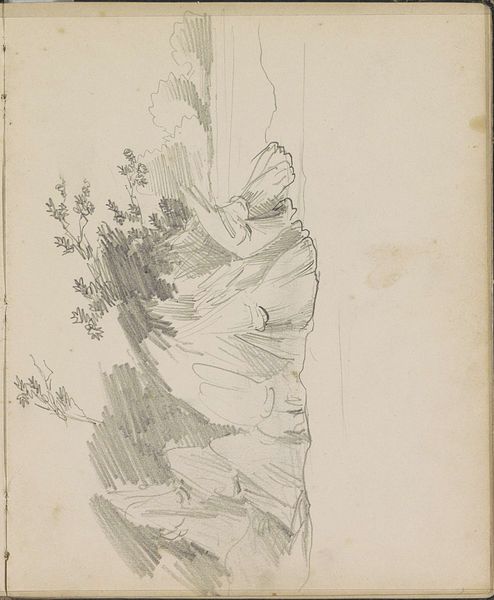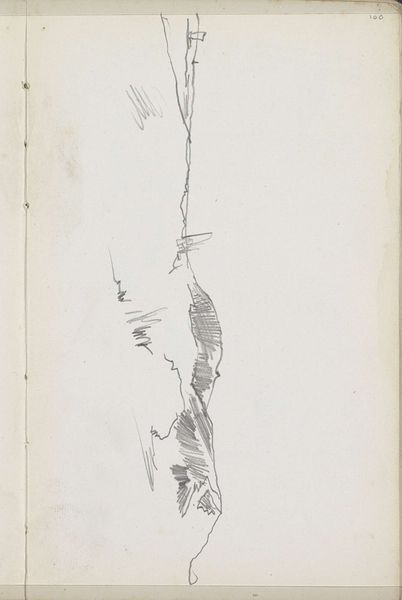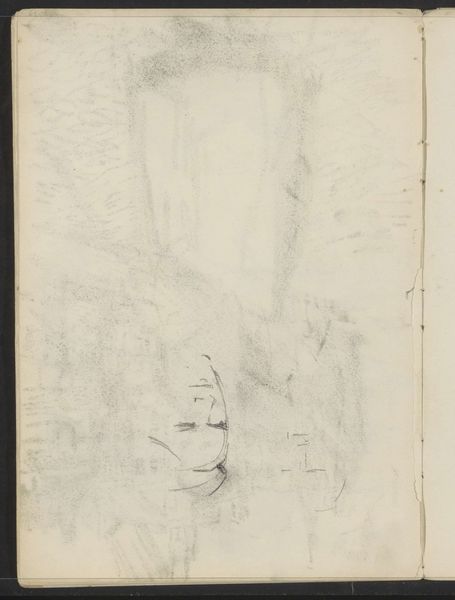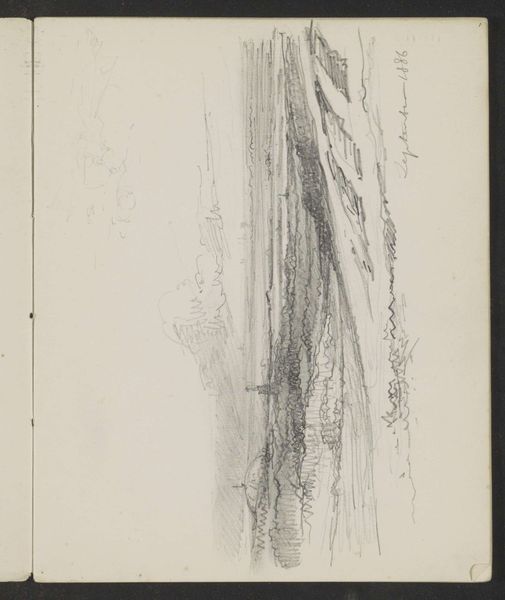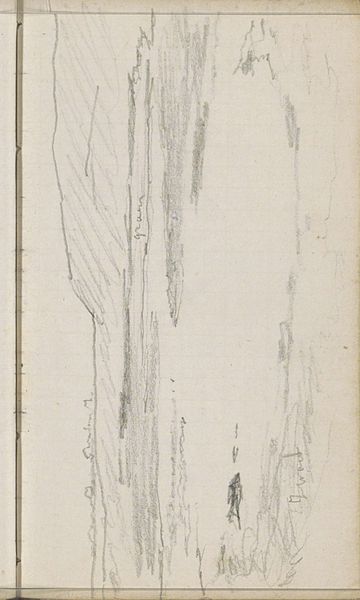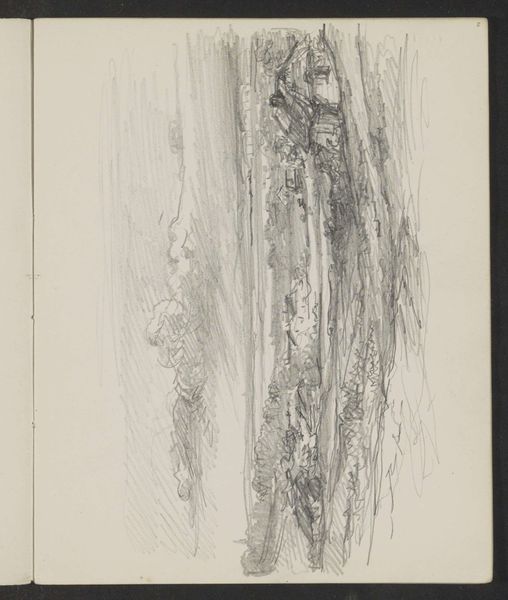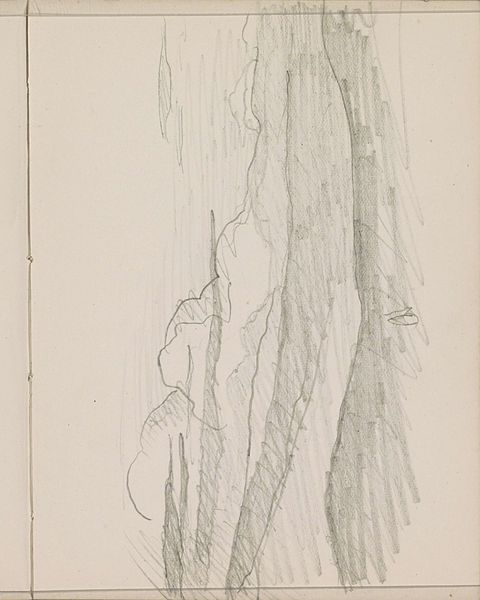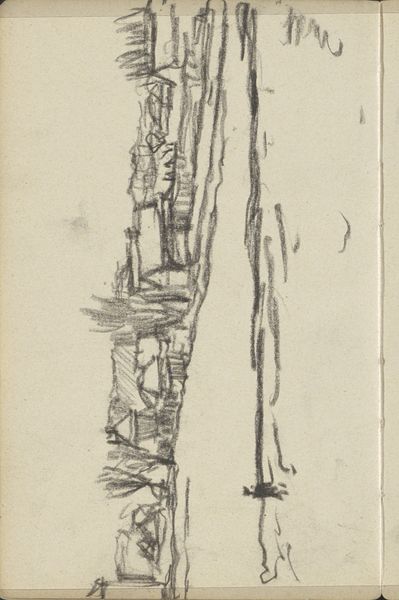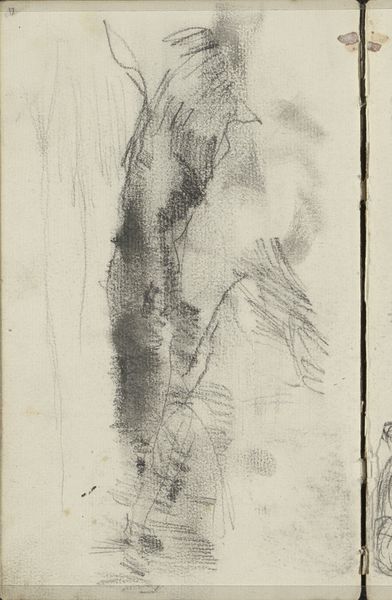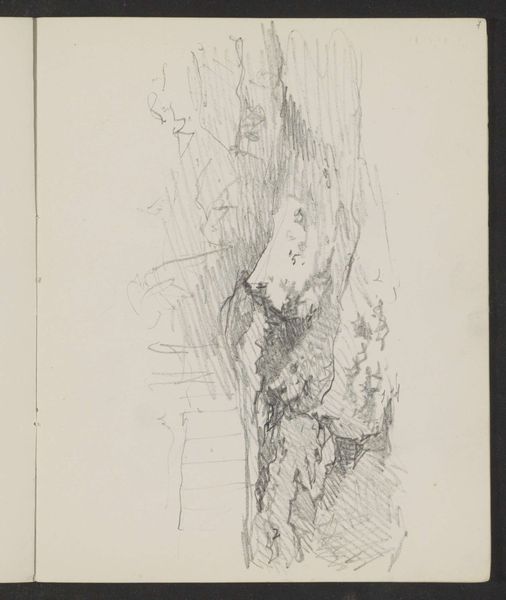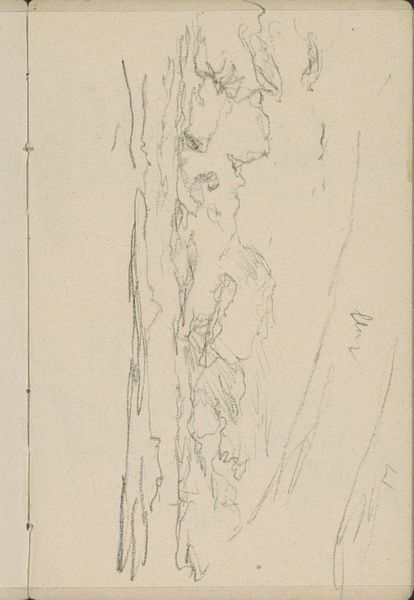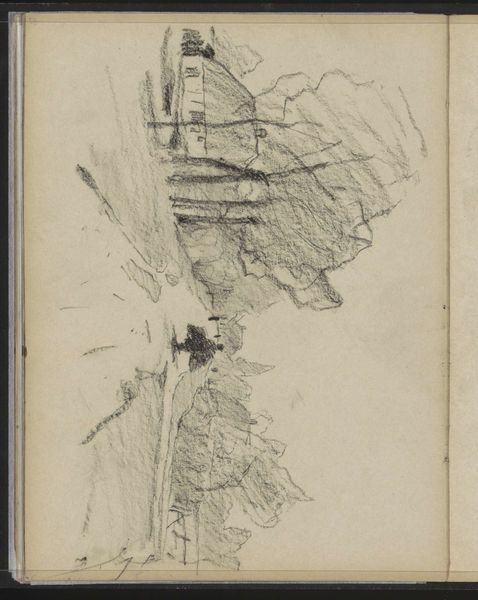
drawing, pencil
#
drawing
#
pencil sketch
#
landscape
#
pencil
#
realism
Copyright: Rijks Museum: Open Domain
Curator: This is "Landschap met bomen en een boerderij," or "Landscape with Trees and a Farm," a pencil drawing by Johannes Tavenraat, created sometime between 1841 and 1853. It's part of the Rijksmuseum collection. Editor: It’s intriguing. Stark, almost—the minimal pencil strokes giving a ghostly quality. There's something skeletal about the trees. Curator: Note how Tavenraat uses different pencil pressures to achieve depth and shadow. You can see the clear outline of the basic forms of the tress; this level of realism reminds us how industrializing rural labor in the 19th century shaped art. Editor: Precisely. The towering trees, particularly the lone sentinel on the right, evoke a sense of nature's enduring power, practically a mythological sentinel standing in an old world being swallowed by time itself. Curator: Interesting observation! He could have sketched this landscape with an eye to detail, possibly responding to debates surrounding agriculture at the time? Consider the pencil itself—a manufactured product enabling a quicker form of representation, influencing artistic process. Editor: Yes, and the pencil lines aren't just representational; they have their own emotive power. Those shadows definitely conjure the memento mori feeling of classic Vanitas painting. Perhaps also, on a grander scale, nature itself serving as the ultimate, impartial judge. Curator: Tavenraat shows us a way to understand landscape not only through idealized aesthetics but also from the viewpoint of labor. Look at the sketched form of the house—clearly present. Was he focusing on domestic architecture and production through labor and natural resources? Editor: Perhaps a deliberate ambiguity, leaving space for contemplation, inviting reflection on human vulnerability when contrasted with a domineering natural world. The unfinished quality amplifies this sensation, an abandoned memory, ready for each of us to insert meaning. Curator: I'm left with thoughts about how materials like graphite redefine how one can understand production in 19th-century landscape artistry. Editor: For me, the drawing's true power resides in those wispy symbols; nature, labor, and decay – it all comes to something greater than realism and a singular human life.
Comments
No comments
Be the first to comment and join the conversation on the ultimate creative platform.
